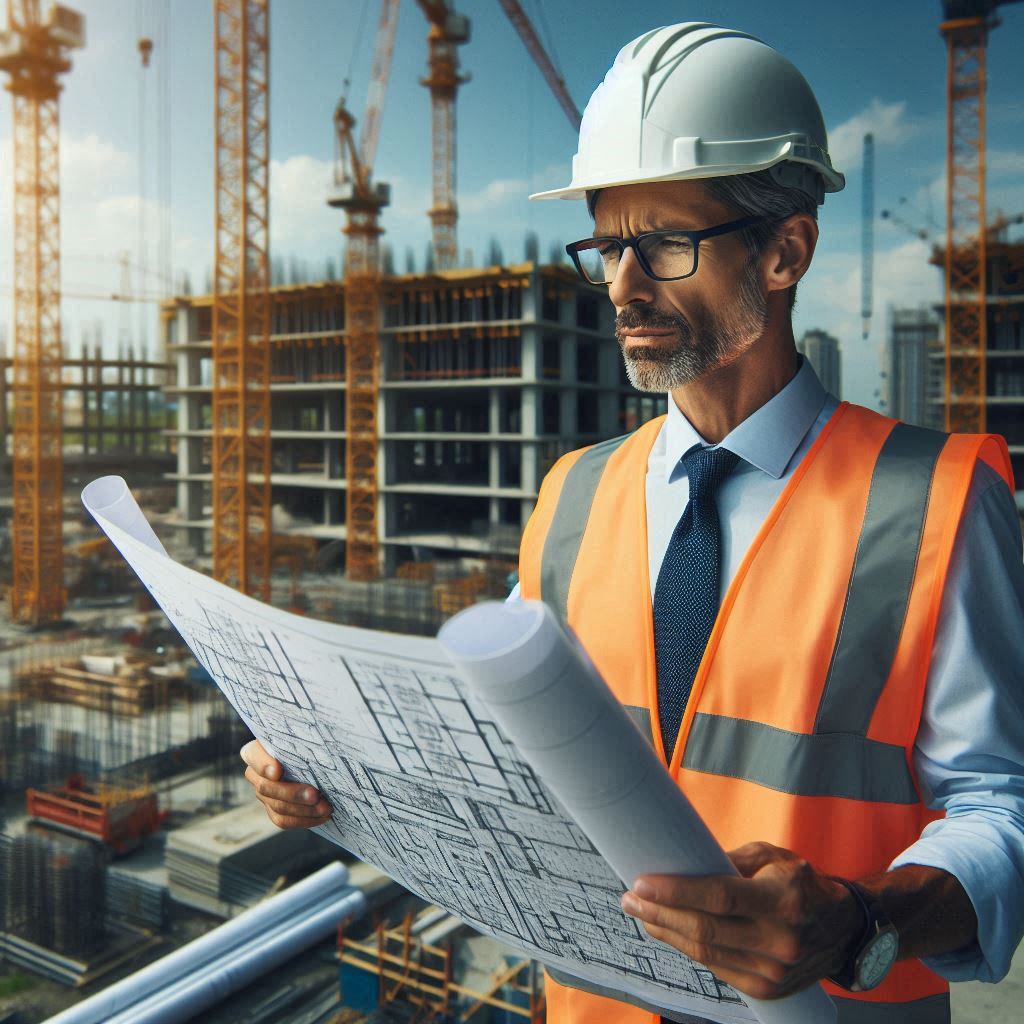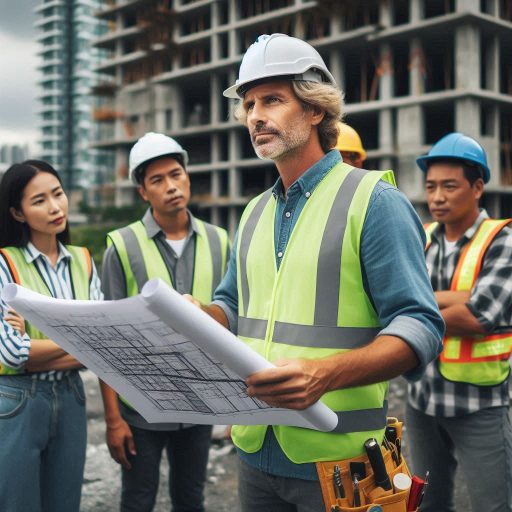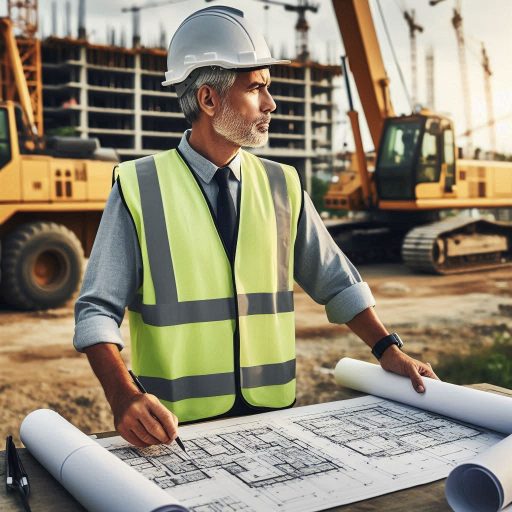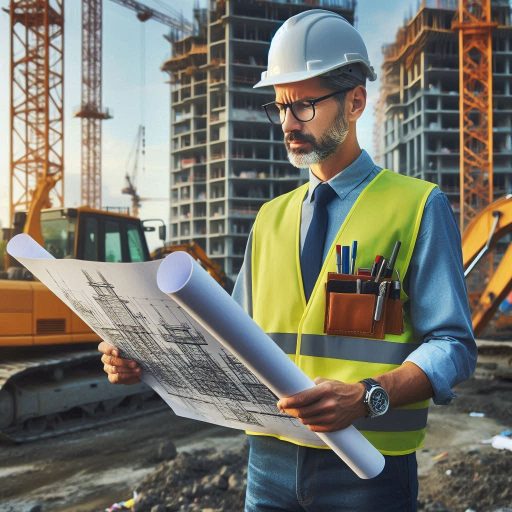Introduction
Landscape architecture is the art and science of designing outdoor spaces to enhance both aesthetics and functionality.
It involves planning and designing parks, plazas, green roofs, and other outdoor areas, blending natural and built elements to create visually appealing environments.
In cities, urban spaces play a crucial role in fostering social interaction, promoting physical activity, and improving mental well-being.
Public parks, plazas, and greenways provide vital gathering spaces for communities to connect and relax. Individuals escape the urban bustle in these peaceful areas.
The impact of landscape architecture on urban spaces goes beyond aesthetics.
It contributes to environmental sustainability by incorporating green infrastructure, managing stormwater, reducing air pollution, and cooling city temperatures.
Well-designed urban spaces mitigate overcrowding and stress caused by urbanization. They provide areas for recreation, relaxation, and socialization.
Landscape architecture transforms urban spaces, making them vibrant, sustainable, and livable. It enhances city residents’ quality of life.
Historical Perspective
Evolution of landscape architecture in urban design
Landscape architecture has played a pivotal role in shaping urban spaces throughout history.
Early civilizations like ancient Egypt and Mesopotamia showcased formal gardens, setting a foundation for landscape design.
As cities evolved, the integration of nature into urban planning became essential for both aesthetics and functionality.
The Renaissance period marked a turning point in landscape architecture.
During this time, designers emphasized symmetry, order, and grandeur in gardens.
Italy led this movement, with iconic examples like the Villa d’Este’s gardens.
These designs influenced urban planning, introducing green spaces that blended art with nature.
Key figures and movements that shaped landscape architecture in urban spaces
The 19th century brought significant advancements in landscape architecture.
As cities grew, the need for public parks became evident.
Key figures like Frederick Law Olmsted emerged, shaping the future of urban green spaces.
Olmsted‘s work on New York City’s Central Park in 1858 is a prime example.
He believed parks were essential for public health and social interaction, setting a new standard for urban design.
In Europe, the Industrial Revolution spurred rapid urbanization, leading to overcrowded cities.
Landscape architects saw the need to balance industrial growth with natural environments.
Ebenezer Howard’s Garden City movement, developed in the late 19th century, addressed this.
Howard advocated for self-contained communities surrounded by green spaces.
His ideas laid the groundwork for modern suburban planning, merging nature and urban life.
In the 20th century, modernist movements further influenced landscape architecture.
Le Corbusier, a pioneer in urban design, promoted the idea of “towers in the park,” integrating high-rise buildings with expansive green areas.
This concept shaped cities worldwide, from Bras‘lia in Brazil to Chandigarh in India.
Another notable figure is Ian McHarg, whose 1969 book Design with Nature revolutionized the field.
McHarg introduced ecological principles into landscape architecture, advocating for sustainable urban planning.
His work emphasized the importance of understanding natural systems when designing cities.
Iconic urban spaces designed by landscape architects
Iconic urban spaces created by landscape architects demonstrate the profound impact of their work.
The High Line in New York City, designed by James Corner Field Operations, transformed an abandoned railway into a vibrant public park.
It exemplifies how landscape architecture can repurpose urban spaces while promoting community interaction.
The evolution of landscape architecture reflects the changing needs of cities and their inhabitants.
From the grand gardens of the Renaissance to sustainable urban spaces today, landscape architects continue to shape cities in meaningful ways.
Their work highlights the importance of integrating nature into urban environments for both functionality and beauty.
Read: Top Skills Needed for Art Educators and Instructors
Functionality and Practicality
The Role of Landscape Architecture in Creating Functional Urban Spaces
Landscape architecture plays a transformative role in the development of functional urban spaces.
Beyond just aesthetics, it focuses on crafting environments that are practical, sustainable, and enhance the well-being of urban residents.
As cities grow, the need for well-planned spaces becomes critical in ensuring livability, promoting social cohesion, and improving public health.
Landscape architects design to bridge the gap between nature and human-made environments.
They create cities that are beautiful, functional, and enjoyable.
Green Spaces
Green spaces are perhaps the most visible and valued contribution of landscape architecture to urban spaces.
Parks, gardens, and urban forests offer a much-needed respite from the concrete and steel that dominate cityscapes.
However, their role goes far beyond mere aesthetics. Green spaces improve air quality, reduce urban heat, and provide essential habitats for biodiversity.
They also have significant psychological benefits, reducing stress and improving mental health by offering spaces for relaxation and reflection.
Pedestrian Pathways
Pedestrian pathways are much more than routes for walking; they serve as conduits for social interaction and connectivity.
Well-designed pathways can foster a sense of community by encouraging people to explore different areas of the city, interact with others, and discover new places.
They connect neighborhoods, commercial centers, and recreational areas, creating a fluid urban experience that integrates diverse functions within the city.
By incorporating wide sidewalks, adequate lighting, and green buffers, landscape architects ensure that these pathways are inviting, safe, and usable for all.
Recreational Areas
Recreational spaces are another critical element in urban design that landscape architects carefully integrate.
Cities bustle with activity, creating stress, so recreational areas offer spaces for physical activity, leisure, and socializing.
These spaces, which include sports courts, playgrounds, amphitheaters, and open plazas, offer something for everyone‘from children to adults, individuals to families.
How Landscape Architecture Improves Quality of Life
Ultimately, landscape architecture is about improving the overall quality of life in urban environments.
By combining aesthetics with functionality, it enhances the health, well-being, and social fabric of urban populations.
Integrating green spaces, pedestrian pathways, and recreational areas makes cities more visually appealing and healthier.
Sustainable design elements enhance inclusivity and resilience within urban environments.
These features promote well-being and create thriving, sustainable communities.
Landscape architects are not simply designers of parks or gardens; they are visionaries who create environments that meet the diverse needs of urban populations.
Their work ensures that cities remain vibrant, sustainable, and enjoyable places to live, work, and play.
Landscape architects shape the future of urban living by crafting spaces that foster interaction and relaxation.
They also design environments that support ecological balance, making cities more sustainable and livable.
As cities expand, thoughtful and sustainable landscape architecture becomes increasingly critical. It shapes a more livable world for future generations.
Read: Collaborating with Other Creative Roles
Aesthetics and Design
Aesthetics play a critical role in shaping urban spaces.
Well-designed landscapes enhance both the visual appeal and functionality of cities.
Urban spaces that prioritize aesthetic principles create welcoming environments that boost quality of life.
Importance of Aesthetics in Urban Design
Aesthetics influence how people interact with urban spaces.
Attractive designs encourage residents and visitors to spend more time outdoors.
Green spaces, walkways, and parks create a sense of calm and promote relaxation.
When aesthetics are prioritized, cities become more livable and enjoyable.
Key reasons aesthetics matter in urban design include:
- Encouraging social interaction and community building
- Reducing stress through exposure to natural elements
- Attracting tourists and boosting the local economy
- Improving public health by encouraging outdoor activity
Use of Plants in Landscape Architecture
Plants play a crucial role in urban landscape design.
Trees, shrubs, and flowers add color and vibrancy, creating an inviting atmosphere.
Strategically placed plants provide shade, reduce heat, and improve air quality.
Key ways plants enhance urban spaces.
- Softening harsh architectural lines and surfaces
- Creating visual interest and diversity through seasonal changes
- Reducing noise pollution in busy urban areas
- Supporting biodiversity and local wildlife
Materials and Water Features
The choice of materials is important in landscape architecture.
Natural materials like stone, wood, and brick harmonize with plant life, enhancing the visual appeal.
Paved walkways, benches, and sculptures made from quality materials add structure and function to urban spaces.
Water features, such as fountains, ponds, and waterfalls, provide additional aesthetic value.
They introduce soothing sounds, reflect light, and create focal points within a space.
Impact of Design Elements on Urban Spaces
Effective design elements transform urban spaces into more enjoyable environments.
Thoughtful arrangements of plants, materials, and water features create harmonious landscapes.
These elements work together to elevate the overall look and feel of cities.
Design elements impact urban spaces by.
- Enhancing the visual appeal and making spaces more inviting
- Fostering a sense of identity and community pride
- Encouraging sustainable practices through green infrastructure
- Creating areas for relaxation, recreation, and socialization
Aesthetics and design are vital components of urban landscape architecture.
By integrating plants, materials, and water features, urban spaces become more visually appealing, functional, and sustainable.
Transform Your Career Today
Unlock a personalized career strategy that drives real results. Get tailored advice and a roadmap designed just for you.
Start NowRead: Breaking Down Iconic Movie Costumes

Environmental Sustainability
Incorporating Sustainable Practices in Landscape Architecture
Landscape architecture plays a crucial role in promoting environmental sustainability.
By integrating sustainable practices, landscape architects help create greener, healthier urban environments.
These practices include using native plants, reducing water consumption, and implementing energy-efficient designs.
Sustainable landscape architecture also focuses on minimizing pollution and waste.
Using eco-friendly materials and techniques, such as rainwater harvesting, helps conserve resources.
These strategies contribute to reducing the environmental footprint of urban spaces.
Moreover, landscape architects work to preserve natural habitats and biodiversity through thoughtful design.
Benefits of Green Infrastructure in Urban Spaces
Green infrastructure, such as parks, green roofs, and urban forests, provides numerous environmental benefits.
One major benefit is improved air quality, as plants absorb carbon dioxide and release oxygen.
Green spaces also help mitigate the urban heat island effect by cooling city temperatures.
Additionally, green infrastructure enhances stormwater management by reducing runoff and preventing flooding.
Permeable surfaces, such as green roofs and rain gardens, allow water to filter naturally into the ground.
This reduces pressure on municipal drainage systems and decreases the risk of water pollution.
Moreover, green spaces offer habitat for urban wildlife, supporting biodiversity.
The Role of Landscape Architects in Promoting Environmental Awareness
Landscape architects play a key role in raising environmental awareness in cities.
Through their designs, they educate communities about the importance of sustainability and conservation.
By incorporating educational signage and sustainable elements in public spaces, they encourage eco-friendly behaviors.
Landscape architects also collaborate with city planners to ensure that urban development aligns with environmental goals.
They advocate for policies that prioritize green infrastructure and environmental protection.
By promoting the use of native plants and reducing water-intensive landscapes, landscape architects help conserve local ecosystems.
Furthermore, their designs inspire residents to connect with nature, fostering a culture of environmental stewardship.
Creating Sustainable Cities Through Landscape Architecture
Sustainable landscape architecture contributes significantly to the overall environmental health of cities.
Green infrastructure, when thoughtfully designed, improves air quality, reduces heat, and manages water resources effectively.
Landscape architects, through sustainable practices, enhance urban environments while protecting natural ecosystems.
Their work not only beautifies urban spaces but also promotes long-term environmental resilience.
By prioritizing green infrastructure, cities can reduce their environmental impact and create healthier living spaces for residents.
Ultimately, landscape architects help create urban environments that are both functional and sustainable, benefiting both people and the planet.
Read: Building a Portfolio for Costume Design
Social Interaction and Community Engagement
Promotion of social interaction through well-designed urban spaces
Landscape architecture significantly impacts social interaction and community engagement in urban spaces.
Thoughtfully designed urban environments promote social interactions among residents.
People naturally gravitate toward inviting spaces that encourage connections.
Creation of gathering spots for community events and activities
Well-designed parks, plazas, and greenways serve as community gathering spots.
These areas host events, markets, and festivals that unite residents.
They create opportunities for neighbors to meet and engage with one another.
Moreover, these communal spaces enhance the overall livability of urban areas.
Landscape architects play a crucial role in designing these gathering spots.
They carefully consider factors such as accessibility, visibility, and amenities.
These elements contribute to a space‘s appeal, making it more inviting for social gatherings.
Seating areas, shade structures, and pathways encourage people to linger and interact.
The creation of multifunctional spaces fosters diverse community activities.
For example, a park can serve as a venue for yoga classes, children‘s playdates, and art fairs.
This versatility attracts various groups, enhancing community cohesion.
Residents begin to see these spaces as integral parts of their daily lives.
landscape architecture fosters a sense of belonging and pride in urban residents
Landscape architecture also fosters a sense of belonging among urban residents.
Well-designed environments make individuals feel connected to their surroundings.
When residents have access to beautiful and functional outdoor spaces, they take pride in their community.
This pride encourages them to participate in local activities and initiatives.
Community gardens are a prime example of how landscape architecture can enhance social engagement.
These gardens provide residents with a shared space for gardening and collaboration.
They encourage teamwork, foster relationships, and improve community ties.
People of all ages come together, share knowledge, and cultivate a sense of ownership over the space.
Moreover, landscape architecture can influence the perception of safety in urban areas.
Well-lit and well-maintained spaces create a feeling of security.
This sense of safety encourages more people to use these spaces, leading to increased social interaction.
In addition, thoughtful landscape design can enhance accessibility for all community members.
Incorporating features like wheelchair ramps and wide pathways ensures everyone can participate in community events.
This inclusivity fosters a sense of belonging among diverse populations.
Ultimately, the impact of landscape architecture on social interaction is profound.
It transforms urban spaces into vibrant, engaging environments.
These spaces promote community engagement, strengthen bonds, and instill pride in residents.
As cities continue to evolve, the role of landscape architecture in fostering social connections will remain essential.
By prioritizing well-designed public spaces, cities can cultivate thriving communities that celebrate interaction and collaboration.
Find Out More: Portfolio Tips for Aspiring Production Designers
Economic Impact
Contribution of Landscape Architecture to Property Values in Urban Areas
Landscape architecture is an essential component of urban planning that significantly impacts property values in metropolitan settings.
A well-designed urban landscape features parks, gardens, plazas, and other green spaces.
These elements enhance neighborhood visual appeal and improve residents’ quality of life.
Studies have consistently shown that properties located near attractive green spaces command higher prices in the real estate market.
Homebuyers see proximity to parks and recreational areas as a desirable feature. This perception enhances their overall lifestyle and well-being.
Aesthetic Improvement and Desirability
The aesthetic transformation brought about by landscape architecture can profoundly influence the desirability of a neighborhood.
Thoughtfully designed parks and public spaces create a sense of place, inviting residents and visitors to engage with their environment.
Features such as walking paths, gardens, and recreational areas foster community interactions and promote outdoor activities, making neighborhoods more vibrant.
This enhancement in aesthetics not only elevates the community‘s image but also increases the demand for properties in the vicinity.
Buyers often prioritize living near well-maintained green spaces, which translates to increased competition and higher property prices.
Psychological and Emotional Impact
The psychological benefits of well-designed landscapes also play a crucial role in influencing property values.
Green spaces are linked to improved mental health, reduced stress levels, and enhanced social cohesion.
The presence of nature in urban settings has been shown to create a calming environment, encouraging people to spend more time outdoors.
The connection to nature and community attracts homebuyers and boosts property values.
People seek to invest in areas that promote a healthy, fulfilling lifestyle.
Role of Well-Designed Urban Spaces in Attracting Tourists and Businesses
The strategic design of urban spaces significantly impacts tourism and local business growth.
Cities that prioritize aesthetic appeal through landscape architecture create inviting environments that encourage exploration and engagement.
Public squares, parks, and waterfronts become focal points for social interactions and community events, enhancing the overall experience for visitors.
Attracting Tourists
Well-designed urban spaces serve as major attractions for tourists.
Cities with beautiful parks and vibrant public areas attract more tourists, boosting local businesses like restaurants, hotels, and shops.
Iconic parks like Central Park in New York City and Millennium Park in Chicago attract millions of visitors yearly.
These parks create bustling economies by driving tourism and supporting local businesses.
The presence of such amenities not only enhances the visitor experience but also fosters positive word-of-mouth promotion, attracting even more tourists.
Boosting Local Businesses
In addition to attracting tourists, thoughtfully designed urban spaces can stimulate local businesses.
When urban areas are aesthetically pleasing and accessible, they encourage foot traffic, which is vital for retail success.
Local shops, cafes, and restaurants benefit from increased patronage as more people are drawn to the vibrant atmosphere of well-designed public spaces.
Businesses often invest in landscape architecture to enhance their appeal.
This creates a win-win scenario where both the business and the community benefit.
Economic Benefits of Investing in Quality Landscape Architecture Projects
Investing in quality landscape architecture projects yields a multitude of economic benefits for urban areas.
The positive impact extends beyond just increased property values and tourism.
it encompasses job creation, local business stimulation, and improvements in residents’ quality of life.
Job Creation
One of the immediate economic benefits of investing in landscape architecture is job creation.
The workforce needed to plan, design, and build parks and green spaces is diverse.
Architects, landscape designers, and horticulturists find employment in these projects. Laborers also play a vital role in constructing these spaces.
Additionally, ongoing maintenance of these spaces creates long-term jobs, contributing to the local economy.
Stimulating Local Businesses
Quality landscape architecture can invigorate local economies by attracting new businesses and fostering the growth of existing ones.
As urban spaces become more attractive, they entice entrepreneurs to establish shops, restaurants, and services that cater to both residents and visitors.
This business growth not only creates jobs but also generates tax revenue for municipalities, enhancing the city’s ability to invest in further improvements.
Showcase Your Business Today
Reach thousands of readers actively exploring professional services. Publish your business profile and grow your audience now.
Publish NowImproving Quality of Life
Beyond economic metrics, quality landscape architecture significantly enhances the overall quality of life for urban residents.
Accessible green spaces promote physical activity, encourage social interaction, and foster a sense of community pride.
This improved quality of life can lead to higher levels of civic engagement and a greater sense of belonging among residents.
As urban spaces become more inviting, they attract new residents, further driving economic growth and revitalization.
Environmental Sustainability
Finally, well-designed landscapes contribute to environmental sustainability, which is increasingly recognized as a critical factor in long-term economic viability.
Green spaces play a vital role in managing stormwater, improving air quality, and supporting biodiversity.
Sustainable landscape practices can reduce urban heat effects and lower energy costs, making cities more resilient to climate change.
Environmental sustainability boosts long-term economic stability, increasing property values and attracting more urban investments.
Challenges and Opportunities for Landscape Architects in Urban Design
Current Challenges Facing Landscape Architects in Urban Design
Landscape architects face several challenges in urban design today.
Rapid urbanization strains resources and limits green space availability.
Increasing population density demands that architects maximize the utility of limited urban spaces.
Environmental concerns, such as climate change and rising temperatures, complicate sustainable landscape design.
Many cities are also struggling with pollution, which affects air quality and livability.
Additionally, budget constraints often hinder large-scale urban greening projects.
Public resistance to change or new developments can further challenge landscape architects, delaying projects or preventing their implementation altogether.
Opportunities for Innovation and Creativity in Shaping Future Urban Spaces
Despite these challenges, landscape architects have vast opportunities for innovation.
Cities are increasingly prioritizing green infrastructure, allowing architects to integrate sustainable design.
Smart cities and technology-driven projects offer new ways to enhance urban landscapes, blending nature with cutting-edge technologies.
Adaptive reuse of abandoned spaces, such as converting parking lots into urban parks, presents new possibilities.
Climate-resilient designs, which incorporate green roofs and stormwater management systems, allow architects to create environmentally friendly solutions.
Urban spaces can be revitalized by integrating public art, interactive installations, and multi-use spaces to foster community engagement.
These creative approaches enhance urban living while promoting sustainability.
Potential Collaborations with Other Professionals in Urban Planning and Development
Collaboration with urban planners, architects, engineers, and developers opens exciting opportunities for landscape architects.
Working closely with urban planners, landscape architects can ensure that green spaces are seamlessly integrated into broader city development plans.
Collaboration with civil engineers can help address infrastructure challenges, such as water management and transportation systems, making cities more resilient and efficient.
Architects and landscape architects can work together to blend building design with surrounding landscapes, ensuring cohesive urban aesthetics.
Developers, on the other hand, offer funding and project management expertise, which are critical to successful implementation.
Environmental scientists and ecologists can provide insights into preserving biodiversity in urban spaces, ensuring that designs support local ecosystems.
Conclusion
Landscape architecture plays a vital role in transforming urban spaces, offering environmental, social, and aesthetic benefits.
By thoughtfully integrating natural elements into cities, it enhances sustainability, improves air quality, and reduces the urban heat island effect.
These green spaces also promote biodiversity and mitigate the environmental impact of dense urban development.
Beyond environmental benefits, landscape architecture fosters community engagement and social well-being.
Well-designed parks, plazas, and green corridors enhance social interaction, promote physical activity, and encourage relaxation.
These spaces play a crucial role in improving residents’ mental and physical health.
As cities continue to grow, there is an urgent need for more investment in sustainable, community-oriented urban design.
Governments, developers, and urban planners must prioritize landscape architecture in city planning.
This approach helps create resilient, livable urban environments.
The lasting impact of landscape architecture on the built environment cannot be overstated.
Through strategic design, urban areas can be transformed into healthier, greener, and more livable spaces.
Investing in this approach is not just an environmental necessity.
It’s a social and economic imperative that will shape the future of our cities for the better.
[E-Books for Sale]
The Big Book of 500 High-Paying Jobs in America: Unlock Your Earning Potential
$19.99 • 500 High-Paying Jobs • 330 pages
Explore 500 high-paying jobs in America and learn how to boost your career, earn more, and achieve success!
See All 500 High-Paying Jobs of this E-Book
1001 Professions Without a Degree: High-Paying American Jobs You Can Start Now
$19.99 • 1001 Professions Without a Degree • 174 pages
Discover 1001 high-paying jobs without a degree! Unlock career tips, skills, and success strategies for just $19.99!




